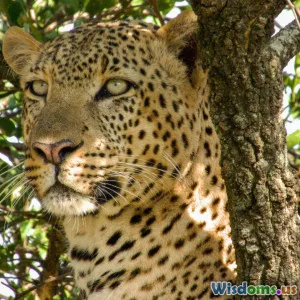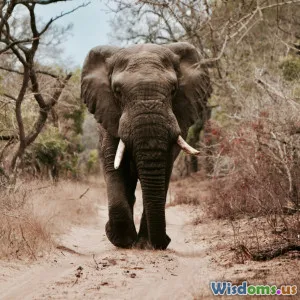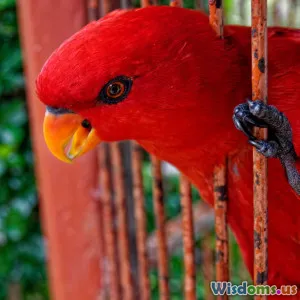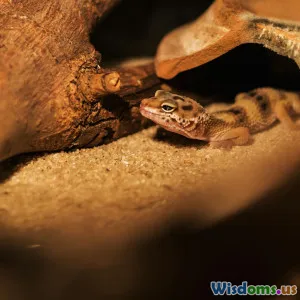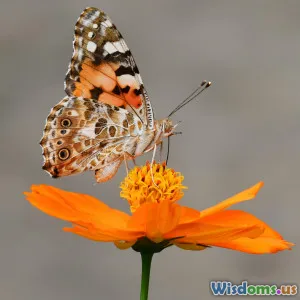
What Happens If We Lose the Monarch Butterfly Forever
11 min read Exploring the ecological and cultural impacts if the monarch butterfly disappears forever. (0 Reviews)
What Happens If We Lose the Monarch Butterfly Forever?
Imagine a world without the fluttering orange-and-black monarch butterflies — a string of silent forests from Mexico to Canada, fields without the iconic wings flitting among milkweed blossoms. While their fragile beauty is often admired, monarch butterflies (Danaus plexippus) are far more than a visual wonder. They are a keystone in ecosystems, vital environmental indicators, and cultural symbols that connect humans to nature and the cycles of life.
This article delves deeply into what it truly means if we were to lose monarch butterflies forever. We will explore the ecological consequences, the ripple effects on agriculture, biodiversity loss, cultural repercussions, and why preserving monarchs demands immediate attention.
Introduction: The Monarch's Marvelous Journey
The monarch butterfly is famous for its spectacular migration — an annual multigenerational trek that covers up to 3,000 miles north and south across North America. Scientists have marveled at this phenomenon, which stands as one of the longest insect migrations on Earth. Every fall, millions of monarchs travel from the northern United States and Canada to specific overwintering sites in the mountain forests of central Mexico.
But monarch populations are jeopardized. Studies reveal alarming declines: the Western population dropped by 99.9% since the 1980s, and the Eastern population declined nearly 80% over the past two decades. The World Wildlife Fund and scientists warn that continued declines could soon lead to their extinction.
What happens if monarchs disappear? The answer extends beyond just losing a pretty butterfly.
The Ecological Role of Monarch Butterflies
1. Pollination Powerhouses
Although monarchs are not the most efficient pollinators compared to bees, they contribute significantly to pollinating various wild plants and crops. As they travel and feed on nectar, they facilitate cross-pollination vital for plant reproduction and genetic diversity. Pollination directly impacts food crops such as alfalfa, clover, and many wildflowers that support livestock and natural habitats.
A world without monarchs means one less agent supporting plant reproduction and ecosystem resilience. This loss could result in diminished seed production and weakened plant populations.
2. Integral Part of the Food Web
Monarchs serve as prey for a host of predators, including birds, spiders, and wasps. Their toxic compounds, sequestered from feeding on milkweed during their larval phase, provide a defense mechanism against many predators, but some species have adapted to tolerate these toxins.
Their disappearance would alter food web dynamics, potentially forcing predators to shift their diets, affecting other insect populations and ecological balances. As Dr. Lincoln Brower, a leading monarch expert, stated, "Monarch butterflies are an integral piece of the ecological puzzle — you can’t just remove that piece and expect the ecosystem to function the same way."
3. Milkweed-Butterfly Dependency
Monarch caterpillars feed exclusively on milkweed plants, which contain cardiac glycosides toxic to most animals. This tight plant-insect relationship helps keep milkweed populations in check and also facilitates plant evolution through selective pressures.
With the loss of monarchs, milkweed dynamics may be disrupted, potentially allowing these plants to grow unchecked or decline without the natural interaction. Such imbalances may cascade through neighboring plant and animal species, affecting habitat quality.
Why Monarch Butterflies Are Essential to Agriculture
Ecosystem Services to Crop Health
Cross-pollination by insects like monarchs impacts crops that sustain the agricultural economy. Healthy, diverse pollinators improve yields of fruits, vegetables, nuts, and seeds. Losing monarchs exacerbates pollinator deficits, already under strain from diseases and pesticides, leading to reduced farm productivity.
Indicator Species for Environmental Health
Monarchs react sensitively to environmental changes such as pesticide exposure, habitat loss, and climate change. Their population trends serve as early-warning indicators that something may be severely wrong in the environment. Losing monarchs means losing a critical signal about ecosystem health that farmers and conservationists rely on for informed decisions.
Cultural and Symbolic Importance
Monarchs in Indigenous Traditions
For many Indigenous communities in Mexico and the United States, the monarch butterfly embodies spiritual meaning, symbolizing souls' return or transformation. The annual monarch migration coincides with the Day of the Dead celebrations in Mexico — a natural event woven into the cultural tapestry.
Inspiration for Science and Education
Monarch butterflies inspire curiosity in children and adults alike, playing a key role in education about life cycles, migration, and the interconnectedness of species. Losing them would rob future generations of tangible opportunities to connect with nature.
Ecotourism Value
The monarch butterfly overwintering sanctuaries in Mexico attract tens of thousands of tourists annually, generating vital income for local economies and incentivizing conservation efforts. Disappearing monarchs threaten this unique relationship between people and place.
Causes Behind the Decline
Understanding what drives monarch declines is crucial to preventing loss:
- Habitat destruction: Urban sprawl, deforestation, and agricultural intensification reduce milkweed availability and overwintering habitats.
- Pesticides and Herbicides: Chemicals like neonicotinoids and glyphosate not only kill monarchs directly but also decimate milkweed and nectar plants.
- Climate Change: Altered weather patterns and temperature extremes can disrupt migration and breeding cycles.
- Disease and Parasites: Increasing prevalence of pathogens weakens populations.
Without mitigating these factors, the prospects of recovery remain bleak.
Global Ripple Effects of Monarch Loss
The disappearance of monarch butterflies is not an isolated tragedy; it signals larger environmental instability.
- Biodiversity Loss: Monarch extinction would join growing species loss, reducing nature’s resilience.
- Ecosystem Services Decline: Reduced pollination, altered food webs, and degraded habitats affect ecosystem functionality.
- Cultural Erosion: Less natural heritage for communities worldwide, weakening human-nature bonds.
Conservation has to be holistic, addressing the root causes affecting myriad species simultaneously.
What Can We Do to Help Save Monarch Butterflies?
Conservation and Restoration
Efforts such as planting native milkweed species, protecting overwintering sites, and creating pollinator corridors reduce habitat stress.
Organizations like Monarch Watch and the Xerces Society lead impactful initiatives:
- Adding milkweed to roadside plantings and gardens
- Encouraging pesticide-free farming practices
- Rescuing and rehabilitating overwintering forests through community programs
Policy and Advocacy
Strong policies banning harmful pesticides, protecting habitats, and integrating monarch-friendly agriculture are vital. For instance, California’s 2022 bill requiring increased milkweed and pollinator habitat on state lands showcases effective governance.
Awareness and Education
Engaging communities through citizen science, school programs, and ecological tourism fosters stewardship and broad public support.
Conclusion: More Than Just a Butterfly
Losing the monarch butterfly forever means much more than losing a pretty insect. It rings an alarm for the fragility of ecosystems, the health of our environment, and the cultural connections that enrich human life. Their extinction would be a poetic and ecological loss, poignant in its symbolism and lasting in its environmental impacts.
Protecting monarchs is a step toward safeguarding biodiversity, stabilizing ecosystems, and reminding humanity of its vital role as stewards of the natural world. Every milkweed planted, policy made, or awareness raised brings us closer to ensuring that these orange-winged wonders continue their timeless journey for generations to come.
As conservationist Dr. Chip Taylor observes:
"Conserving the monarch is about saving a piece of ourselves—a connection to nature and a future where biodiversity thrives."
Let's act now before the silence of vanished wings fills the skies.
References
- Brower, L. P. (1996). Monarch butterfly ecology and conservation. Annual Review of Ecology and Systematics, 27(1), 493-521.
- Pleasants, J. M., & Oberhauser, K. S. (2013). Milkweed loss in agricultural fields because of herbicide use: effect on the monarch butterfly population. Insect Conservation and Diversity, 6(2), 135-144.
- Vidal, O., Rendón-Salinas, E., et al. (2014). Decline of monarch butterflies overwintering in Mexico: is the migratory phenomenon at risk? Insect Conservation and Diversity, 7(2), 153-158.
- World Wildlife Fund Mexico (2023). Monarch Butterfly Sanctuary Conservation Reports.
- Taylor, C. (2020). Monarch Watch: Conservation for the Iconic Butterfly.
Rate the Post
User Reviews
Popular Posts










